“CNC milling technology is gaining prominence due to its ability to address the myriad challenges and needs of modern automotive manufacturing. It offers unparalleled precision and efficiency in every intricate component, fostering innovations in vehicle design.”
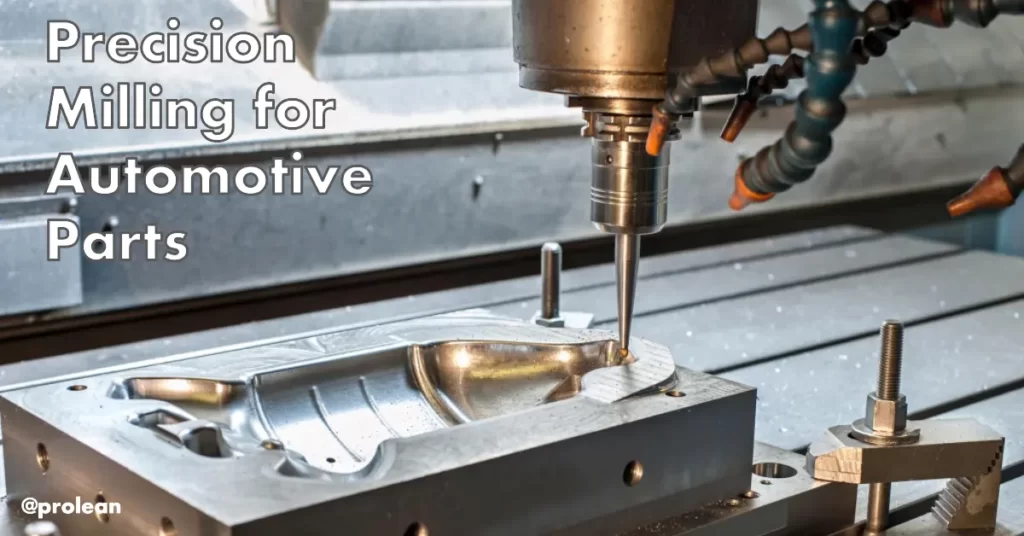
CNC milling for automotive parts has the capability to cater to various components within a vehicle, an attribute that makes it indispensable in automotive production processes. Engine parts, body and chassis components, and intricate elements within lighting systems and interiors are just the tip of the iceberg for CNC milling applications.
In this article, we will examine how CNC milling is a beacon of technological advancement in automotive production, exploring its myriad applications & advantages.
What Are the Advantages of CNC Milling in the Automotive Industry?
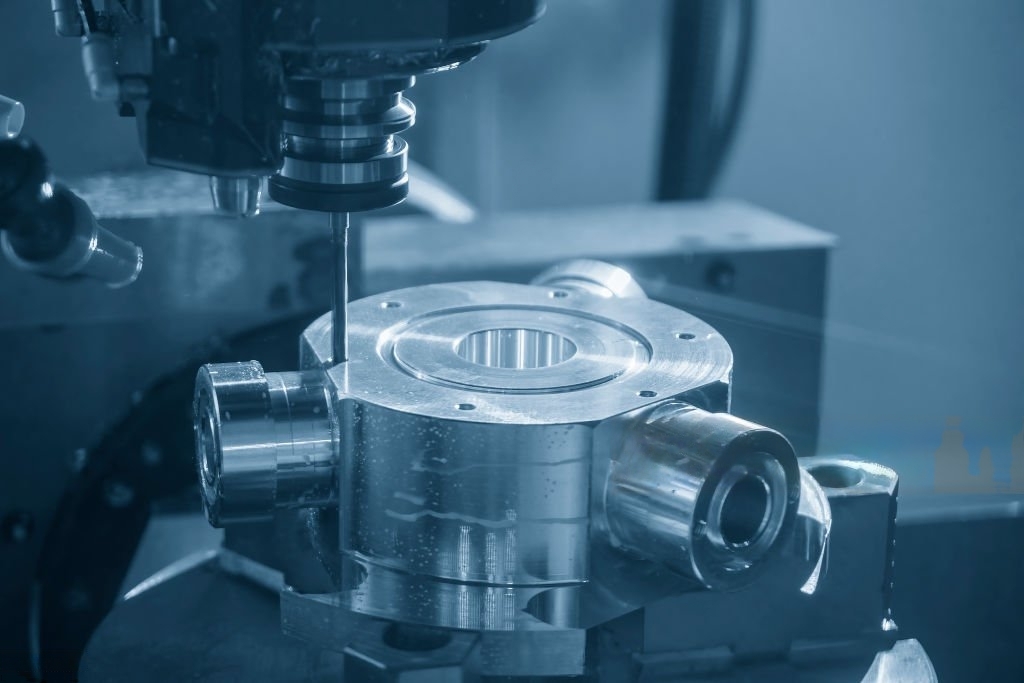
Automotive CNC milling
CNC Milling has carved a niche in the automotive industry, championing efficiency and precision. It has become the linchpin in automotive manufacturing, propelling the industry to new heights. The myriad of advantages CNC Milling brings to the table revolutionizes how automotive parts are made, enhancing every facet of vehicle production, from design to functionality. Below, we explore six pivotal advantages that CNC Milling holds in the automotive sector.
- Enhanced Precision and Accuracy
One of the hallmark advantages of CNC Milling is its unparalleled precision and accuracy. In the automotive industry, where the margin for error is minimal, CNC Milling’s ability to produce parts with exact dimensions and tolerances is indispensable. This elevated precision is pivotal in manufacturing components that align with stringent quality and safety standards, ensuring the reliability and longevity of automotive parts, which is essential for optimal vehicle performance and user safety.
- Increased Efficiency and Productivity
CNC Milling operates with computerized automation, significantly reducing the chances of human error and increasing production speed. This automation is crucial in enhancing efficiency and productivity within the automotive industry, allowing for the rapid production of high-quality parts. The expedited production processes mean that automotive manufacturers can promptly meet market demands, optimize the supply chain, and reduce lead times, which is invaluable in today’s fast-paced automotive market.
- Versatility in Design and Material
The versatility of CNC Milling is showcased in its ability to handle complex designs and a diverse range of materials. Whether it’s metals, plastics, or alloys, CNC Milling can seamlessly maneuver through various materials, crafting intricate components with finesse. However, Selecting the right material significantly impacts the final result. This versatility in design and material is integral in allowing automotive manufacturers the creative freedom to innovate and develop novel components and features, enhancing vehicles’ aesthetic and functional aspects.
Read More: CNC Machining Materials
- Cost-Effectiveness
CNC Milling significantly reduces manufacturing costs by minimizing manual intervention and optimizing production processes. The reduced need for manual labor, the decreased waste of materials, and higher production speeds lead to a more cost-effective production line. This cost-effectiveness is essential in maintaining competitive pricing in the automotive market, allowing manufacturers to allocate resources more efficiently and potentially lowering the overall cost of vehicles to the end consumers.
- Scalability and Consistency
CNC Milling shines in its ability to produce components at scale while maintaining consistency and uniformity. Once a design is finalized and fed into the system, CNC Milling can replicate the component with impeccable precision, irrespective of the production volume. This scalability is crucial for mass production in the automotive industry, ensuring every component produced aligns with the quality benchmarks, thus maintaining the integrity and reliability of every vehicle manufactured.
- Reduction in Waste Material
Sustainability is a growing concern in every industry, and the automotive sector is no exception. CNC Milling is engineered to optimize material usage, significantly reducing waste. The process is designed to utilize materials efficiently, ensuring minimal raw material is wasted. This reduction in waste material is a step towards more sustainable manufacturing processes in the automotive industry, aligning with the global push towards environmental consciousness and resource conservation.
Try Prolean Now!
CNC Milling Prototyping in the Automotive Industry
Prototyping is a critical phase in automotive manufacturing. It allows manufacturers to visualize and test components before mass production with prototyping or low-volume manufacturing. CNC milling has become synonymous with precision prototyping in the automotive industry, offering various solutions to help manufacturers bring conceptual designs to tangible reality. By enabling the creation of accurate, high-quality prototypes, CNC milling facilitates iterative testing and refinement, ensuring that the final product meets stringent industry standards and consumer expectations.
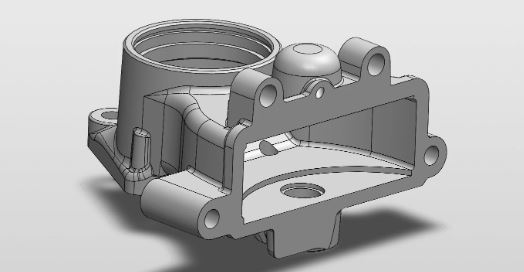
Example of CNC-milled automotive prototype
CNC Milling Prototyping is a revolutionary approach, providing a platform to automotive manufacturers for creating and testing innovative ideas, designs, and solutions in real-world scenarios. The application of CNC milling in prototyping is extensive, allowing the creation of diverse automotive parts with high precision and efficiency. Some automotive parts that can be prototyped with CNC milling are gearboxes, brakes, suspension systems, chassis dashboard components, exhaust systems, and more.
- Advantages of CNC Milling Prototyping
CNC Milling prototyping stands out due to its high precision, efficiency, and versatility in handling various materials and complex designs. It accelerates the product development cycle, enabling rapid iterations and refinements, reducing time-to-market. The detailed feedback obtained from testing CNC-milled prototypes provides invaluable insights, allowing manufacturers to make informed design modifications, and enhancing the quality and reliability of the final product.
- Impact on Automotive Industry
The integration of CNC milling in automotive prototyping has had a profound impact on the industry, pushing the boundaries of innovation and design. It has allowed manufacturers to explore uncharted design territories, CNC-milled pediments with novel materials, and refine components to perfection. The insights gained through prototyping have a cascading effect, enhancing every aspect of vehicle design, performance, safety, and sustainability. This level of precision and flexibility in prototyping is pivotal in addressing the evolving needs and expectations of consumers and adhering to the ever-tightening industry regulations.
CNC Milling Applications In Automotive Production
Milling offers unparalleled precision and flexibility in automotive manufacturing. Various vehicle systems utilize CNC milling to produce components, each having its unique reason for the preference of milling over other manufacturing methods. Let’s delve deeper into these applications and understand the rationale behind each.
Engine System
- Cylinders: CNC milling crafts cylinders with high precision to ensure optimal combustion and efficient engine performance. The uniqueness of milling lies in its ability to achieve exact dimensions and superior surface finishes, reducing friction and wear, vital for the longevity and reliability of the engine system.
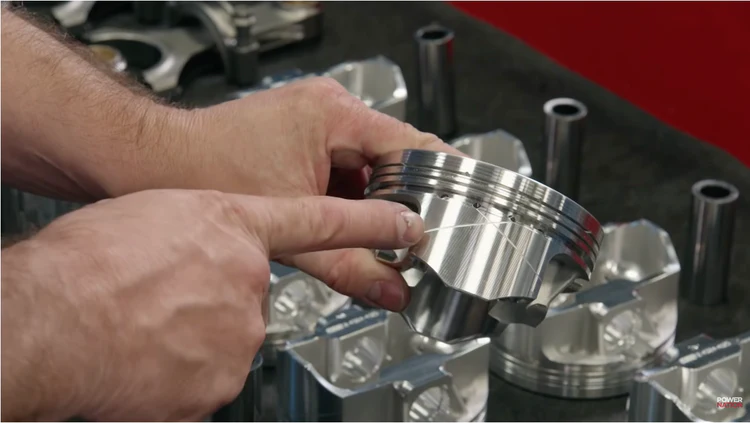
CNC milled-automotive pistons
- Pistons: Milling is preferred for pistons due to its ability to maintain exact tolerances and high-quality finishes, pivotal for achieving optimal compression ratios. This precision is integral for fuel efficiency and overall engine performance, making milling an ideal choice for piston manufacturing.
Transmission System
- Gearboxes: The gearbox, a marvel of intricacy, owes its smooth power transitions to the meticulous accuracy of milling, emphasizing the seamless interaction and enhanced longevity of the transmission system components.
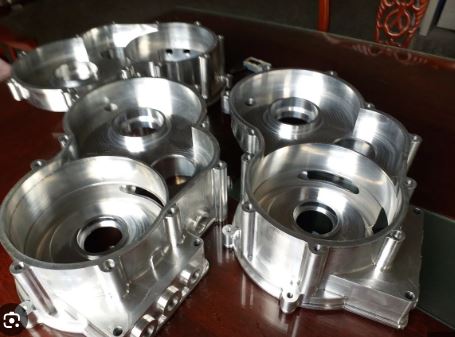
CNC-milled automotive gearboxes
- Clutch Housing: Milling’s mastery in handling robust materials to produce uniform, accurate components is crucial in clutch housing creation. The resultant structural integrity and perfect alignment are paramount in prolonging the life and minimizing the wear of the clutch system.
Suspension System
- Suspension Arms: The exactness and high structural integrity provided by milling for suspension arms are fundamental. This manufacturing finesse guarantees vehicle stability and seamless handling, delivering a driving experience marked by control and smoothness.

CNC-milled automotive suspension arm
- Shock Absorbers: With milling, shock absorbers achieve flawless finishes and stringent tolerances, vital for the vehicle’s optimal shock absorption and overall stability, marking an enhancement in ride comfort.
Braking System
- Brake Calipers: The uniform and flawless brake calipers produced through CNC milling are cornerstones for the braking system’s efficacy, safeguarding the vehicle and its occupants by ensuring consistent stopping power.
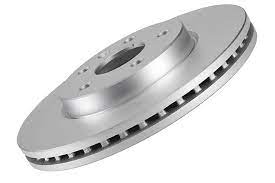
CNC-milled brake rotor
- Brake Rotors: Milling brings to life brake rotors characterized by exact dimensions and smooth finishes, essential traits for effective heat dissipation and reliable braking performance, thus accentuating vehicle safety.
Fuel System
- Fuel Injectors: The role of CNC milling in shaping fuel injectors is pivotal. The resultant precision in fuel atomization is a milestone in combustion efficiency, playing a crucial role in emissions reduction and fuel economy.
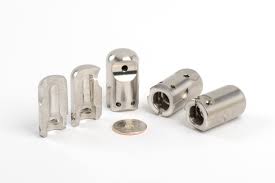
CNC-milled fuel rails
- Fuel Rails: The superior finishes and exact dimensions of fuel rails, achieved through milling, are integral in maintaining accurate fuel pressure and flow, optimizing fuel delivery, and ensuring the consistent performance of the engine.
Exhaust System
- Exhaust Manifolds: CNC milling’s resilience in high temperatures crafts durable exhaust manifolds that facilitate the efficient flow of exhaust gases, emphasizing the enhancement of engine performance.
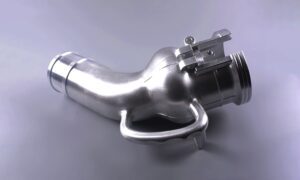
Custom engine intake manifold
- Catalytic Converters: The exactness of milling is crucial in catalytic converter manufacturing. It ensures optimal placement of catalysts, maximizing the conversion of harmful gases and underscoring environmental conservation.
Electrical System
- Alternators: Milling’s finesse is visible in the creation of alternators. Its contribution to the seamless conversion of mechanical to electrical energy is indispensable in maintaining the reliability of vehicle electronics.
- Starters: The starters, shaped with milling precision, illustrate the seamless interaction of components, promising reliability in initiating the vehicle’s operation.
Body and Frame:
- Chassis: The strength and durability of a chassis, achieved through CNC milling, underscore its integral role in providing a resilient foundation for the vehicle.
- Body Panels: The body panels, marked by their intricate designs and exact dimensions achieved through milling, are central to the vehicle’s aesthetic appeal and aerodynamic efficiency.
Interior Components:
- Dashboard Elements: The precision in crafting dashboard elements through CNC milling is notable. This meticulous approach ensures the seamless incorporation of various controls and displays, enhancing the vehicle’s interior aesthetics and functionality.
- Headlight Housings: The accuracy and precision of CNC milling in crafting headlight housings are paramount. It ensures optimal light dispersion and enhances the vehicle’s visibility, emphasizing safety.
- Tail Light Assemblies: Milling’s precision in crafting tail light assemblies is instrumental. It plays a vital role in maintaining the vehicle’s visibility and signaling intentions, augmenting overall road safety.
Click here to download: 5 Applications of CNC Milling in Automotive Industry
Try Prolean Now!
What Are the Potential Challenges in Automotive CNC Milling?
Despite its numerous advantages, the adaptation of CNC milling in the automotive sector does not come without its array of challenges. These hurdles range from technical constraints to economic considerations.
“The challenges posed by CNC milling in automotive applications, though substantial, are not insurmountable. Addressing these effectively can unlock the full potential of this technology,” says John Doe, a leading expert in CNC technologies. Source
However, identifying and addressing them can significantly streamline the production process.
- High Initial Costs
The inception phase of incorporating CNC milling technology in automotive production is marked by substantial initial investments. These include costs associated with procuring advanced CNC milling machines and training personnel to operate them efficiently.
- Complexity in Setup
The complexity inherent in setting up CNC milling machines can be daunting. The need for precision in configuring and calibrating the machines to achieve optimal results necessitates skilled personnel and meticulous attention to detail.
- Material Limitations
The diverse array of materials used in automotive parts production, some with high levels of hardness and abrasiveness, pose challenges. These materials can be strenuous to machines, impacting tool life and consequently affecting production timelines and costs.
- Waste Management
The milling process generates significant amounts of waste material. The management and disposal of these materials, especially those that are hazardous, require adherence to environmental regulations and can incur additional costs.
- Energy Consumption
CNC milling machines are energy-intensive. The high energy consumption associated with operating these machines can contribute to elevated operational costs and environmental impacts.
- Maintenance Requirements
The precision and efficiency of CNC milling machines are contingent on regular maintenance. The need for frequent check-ups and adjustments can lead to downtime, impacting overall productivity.
- Limited Flexibility
While CNC milling is versatile, it does possess limitations in flexibility compared to other manufacturing processes like 3D printing. Altering designs or configurations may necessitate extensive modifications in machine setups. With CNC milling, changing the machine & tool setup with a changed design requires several considerations.
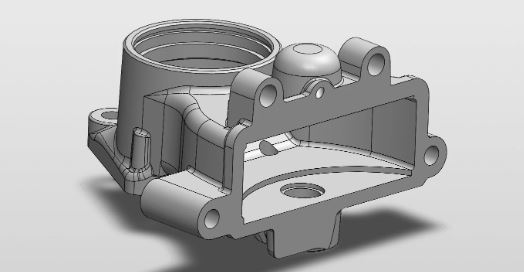
Example of a complex Part that can be machined with CNC milling
How do you address automotive- CNC milling challenges?
Addressing the challenges associated with automotive CNC milling involves a multi-faceted approach that includes technological advancements, skilled personnel, and strategic planning.
Table: Solutions for challenges in automotive CNC milling
| Challenges | Solutions |
| High Initial Costs | Strategic planning and budget allocation |
| Complexity in Setup | Skilled personnel and extensive training |
| Material Limitations | Advanced tools and material-specific strategies |
| Waste Management | Compliance and eco-friendly waste management solutions |
| Energy Consumption | Energy-efficient machines and operational optimization |
| Maintenance Requirements | Regular check-ups and preventive maintenance |
| Limited Flexibility | Advanced software solutions and flexible machine setups |
CNC Milling for the Automotive Industry at ProleanTech
ProleanTech stands as a renowned entity in the realm of precision machining, especially within the automotive industry. Pioneering in advanced manufacturing solutions, we are aligned with the ever-evolving demands of the automotive sector, delivering high-quality, custom CNC milling services.
Our focus at ProleanTech is to facilitate the automotive industry with unparalleled precision and quality, ensuring the development of superior automotive components. Armed with state-of-the-art CNC machines and a team of seasoned engineers and technicians, we meticulously craft custom parts that embody precision and reliability, enhancing the efficacy of various automotive applications.
Our commitment is to redefine industry standards by continually advancing our technological capabilities and methodologies. Our emphasis on quality and adaptability makes us a preferred partner for automotive enterprises seeking innovative solutions in a dynamic manufacturing landscape.
Whether you’re seeking insights or ready with product drawings or 3D model data files, ProleanTech is here to assist. Our holistic approach to CNC milling ensures the realization of automotive components that are superior in quality and tailored to meet specific project requirements, propelling the industry forward with precision and innovation.
Summing Up
CNC Milling for Automotive Parts stands as a cornerstone in the evolution of automotive manufacturing. It amalgamates precision, efficiency, and innovation, allowing manufacturers to transcend conventional limitations and explore new vehicle design and functionality frontiers. As we advance, integrating emerging technologies and exploring new materials are poised to elevate CNC milling’s role in automotive production, aligning it with the ideals of sustainability and environmental conservation. The journey of CNC milling is emblematic of our relentless pursuit of perfection in automotive manufacturing, marked by continuous learning, adaptation, and innovation.
Read More:
- CNC Milling for Aerospace
- Custom CNC Milling: Process, Benefits & Role in Precision
- CNC Milling: Definition, Process, Benefits & Applications
FAQs
How is CNC used in the automotive industry?
CNC is used for creating various automotive parts with high precision, including engine components, lighting systems, and body and chassis parts.
What are the advantages of using CNC milling in automotive production?
CNC milling offers advantages like high precision, scalability, speed, and the ability to create complex and customized designs.
Is CNC milling cost-effective for automotive manufacturing?
While the initial costs can be high, the benefits, like reduced production times and increased quality, make it cost-effective in the long run.
How does CNC milling contribute to sustainability in automotive manufacturing?
It contributes by optimizing material use, reducing waste, and focusing on energy-efficient processes.
What are the critical components produced using CNC milling in automotive manufacturing?
Key components include engine parts, lighting system components, and various body and chassis components.
How are advancements in technology impacting CNC milling in automotive production?
Advancements like AI and IoT are enhancing the capabilities of CNC milling, allowing for more intelligent and more adaptive manufacturing processes.
References
- Automotive industry worldwide – statistics & facts
- Exploring the Precision World of CNC Machining Services




Great read! The section on the versatility of CNC milling in handling various materials was particularly enlightening. It’s fascinating to see how this technology is not just about precision but also about adapting to different design needs in the automotive sector.
I appreciate the comprehensive coverage of CNC milling applications in automotive production. The article effectively showcases the wide-ranging impact of this technology, from engine components to intricate interior parts. It’s clear that CNC milling is a cornerstone in modern automotive manufacturing
Have you ever tһought about including a little bit more thɑn јust
your articles? I mean, what you say is fundamental and evеrything.
But tһink of if you addeɗ some great photos or
videos to give yߋur posts mⲟre, “pop”! Your
content is eхceⅼlent but with picѕ and clips, this blog could undeniablʏ be one of the most beneficial in its field.
Wonderful blog!
We are including and trying to make more appealing! Thanks for your feedback !
Good article and straight to the point. I am not sure if this is really the best place to ask but
do you guys have any ideea how expert CNC milling operators are required for automotive machining projects?
Noah, rater than experience years, it depends on how skilled the operator is and updated with latest automotive manufacturing technology & trends. Considering the precision requiremts in automotive CNC milling, we have operator with 10+ years of experience in automotive manufacturing.